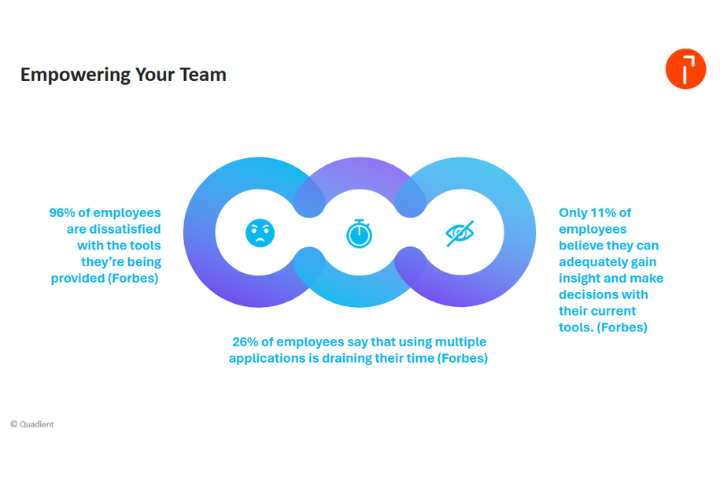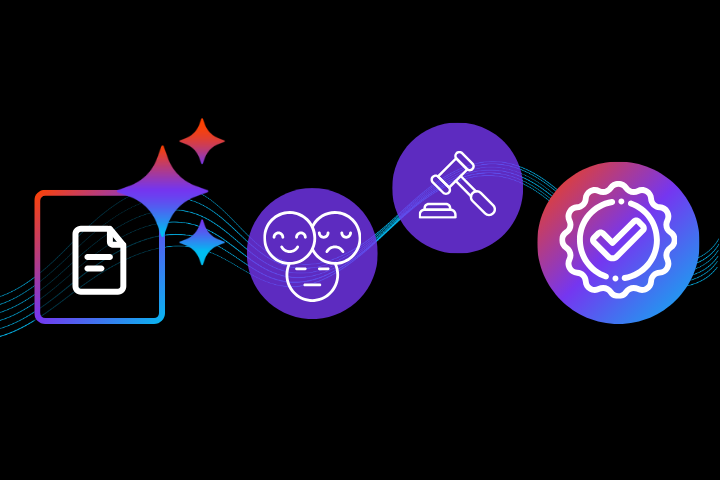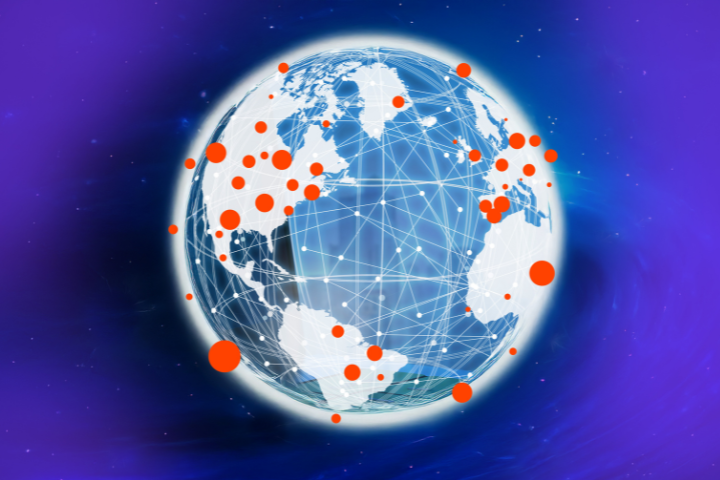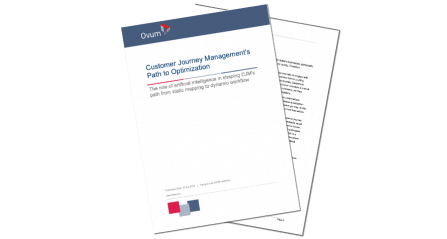Introduction
It’s critical that the entire organisation works together to create the customer experience that your customers want and expect. But how do you shift the focus of the entire company to put the customer front and centre? How do you help employees in all departments work together, collabrate, and innovate in the name of a better customer experience? Customer journey mapping software is the one tool you must have in your customer experience toolbox.
What is customer journey software?
Customer journey software enables a business to create a customer journey map which helps them to visualise the process a customer goes through to accomplish a goal. Customer journey mapping helps ensure that you’re aware of where and how to best deliver communications to assure they meet your customers’ expectations.
What is customer journey software useful for?
Customer journey tracking software provides a view into all customer touchpoints and helps businesses understand where their customer experience is poor. It enables businesses to gain insights to help them focus on what matters most to their customers.
A deep understanding of customer behaviours and pain points enables team members, such as customer service representatives, to respond to customer feedback and facilitates collaboration in service of the customer. In addition, customer journey mapping tools help overcome organisational silos.
Mapping your customer’s journey will help you to get organisational buy-in for customer centricity and will allow you to act when you see something that must be corrected.
How to choose the right customer journey software for your business
There are many customer journey software options available in the marketplace today. Here are a few things to consider when choosing the right customer journey software for your business.
Choose a cloud-based mapping tool to create collaborative journey maps
Sticky notes work well enough but digital tools facilitate sharing and collaboration.
Choose software that is easy-to-use
Select journey software that is easy for your employees to use, with features such as drag and drop and custom design alternatives to easily create and view comprehensive journey maps. Easy-to-use software ensures that your users' experience is simple and straightforward.
Choose software that enables you to bring the journey to life
Select mapping software that allows you to bring documents, images, audio or video files into your map to bring your journey to life.
Choose software that integrates with other systems
Select mapping software that integrates with project management software and 3rd party platforms so that it can pull data from other systems to provide insights that are actionable.
Choose software that incorporates digital and physical touchpoints
Ensure your software creates journey maps that include both digital and physical touchpoints so that you can visualise your customer's entire experience.
How to fine tune your customer journey mapping
When an organisation has a client base that is composed of multiple generations it’s easy to make assumptions about the desires and wants of each generation based on generalities. Doing this, however, would be unwise.
For example, not every member of an older generation prefers to speak to a live person. While not every member at the younger end of the target audience spectrum wants to conduct all their business over a smartphone.
James Dodkins, of Rockstar CX, concurs, “I think to segment people by arbitrary circumstances like the year range in which they happened to be born is a very Industrial Age way of looking at 21st-century business. The most important thing about a person isn’t their ‘year of manufacture’. We need to be digging deeper to find similarities across the generations and embracing them instead of trying to find the differences.”
Here are a few things to consider when formulating your journey maps for each generation group in your customer base:
Remember, one size doesn’t fit all
Generational journey mapping provides valuable insight into the preferences of an overall group, but you must also probe beyond the generalities. Be sure to consider the outliers as well i.e., those journey mapping personas in a generation group who don’t fit the general profile. Outlier findings must be factored into your assessment. Then you must decide how representative these findings are of the group’s preferences.
Map deeper
Each lifecycle stage is decidedly different from another but, as underscored above, that doesn’t mean there can’t be similarities as well. The only way to confirm whether there is or not is to go beyond the surface with your journey mapping.
Make the commitment to map at a more detailed level so you can get a true understanding of what each generation’s experience is all about. Once you have this insight, you’ll be able to leverage it to forge richer connections with your audience.
One generation can influence another
Adding further credence to the importance of taking the preferences of a group’s outliers into account is the fact that one generation can influence another. For example, Baby Boomers who don’t have children may exhibit one set of preferences when it comes to communicating with an organisation. While Baby Boomers who do have children could exhibit a different set because their view has been influenced by the preferences of their Millennial children.
Don’t forget the emotional side
When building your journey maps don’t overlook the emotional aspects of each target group’s journey. A customer’s emotions can influence and dictate goals, help define one person from another and serve as indicators of the impression and impact your organisation’s customer experience is making.
Be prepared to augment your journey mapping data
Adrian Swinscoe, best-selling author and Forbes contributor on CX, advises organisations to not just rely on data. “Customers are much more than their data. Go and talk to your customers, talk to different generations in different areas that have had different experiences, hang out with them, really get to know them. Only then will you be equipped with the insight and understanding you need to build a multi-generational experience that works.”
The final word on this topic goes to Annette Franz, Founder & CEO of CX Journey Inc. “Don’t design an experience based on generations; design experiences that will solve problems and help customers do the jobs they need to do, regardless of age.”
Investigate how to fine tune your journey mapping efforts and more by downloading the ebook “Managing the CX Demands of 5 Generations”.
Five common customer journey mapping mistakes
Empathy is all about understanding and sharing the needs and feelings of others. To walk in another’s shoes is to understand and to live what they are doing, thinking, and feeling. These details are all part of the journey mapping process. When we know them, we understand how to deliver a great experience for each individual customer.
Unfortunately, journey mapping has often been criticised as a pointless exercise and a waste of time. It absolutely is - if it’s not done correctly.
Some common journey mapping issues include:
Lack of detail
Without the level of detail that must be captured in a journey map, they cannot be used to transform the experience.
Too high level
If you’re mapping lifecycle stages instead of individual journeys, you’re too high level to affect change in the customer experience.
Failure to bring experience to life
In order to do this, maps need to include artifacts that customers use or interact with along the way. Examples include marketing communications, letters, welcome kits, statements and bills, or audio files of customer service calls.
Wrong perspective
Customer journey maps need to be created from the customer’s viewpoint, not the companies. If you’ve included company jargon and steps taken by the company, then start over.
Stagnation
If you create a map and just leave it hanging on the wall or sitting on your desktop, then you’ll suffer stagnation. A journey map needs to be created through collaboration. It needs to be shared throughout the organisation. It needs to be actionable. And it needs to be updated as the experience is redesigned and evolves. Customer journey mapping is not a one-time exercise.
Where customer journey mapping falls short
To date, most companies have relied on customer journey mapping to deliver proactive, personalised experiences for each of their customers. But journey mapping alone won’t allow you to achieve this. To truly deliver a personalised customer experience, your approach to journey mapping must evolve.
In today’s marketplace where predictive, relevant experiences are expected by consumers, the shortcomings of journey mapping have been exposed.
Yes, journey mapping provides a valuable visual guide and signpost of how to operationalise customer interactions, track sources of negative friction and pinpoint how to unite different enterprise functions around the customer. The problem is journey mapping alone doesn’t allow you to act on customer journeys in real time and in personalised ways. Without these capabilities, organisations can’t facilitate interactions, provide next best actions or enable content orchestration.
Customer journey management – the new wave
If you want to be able to respond to key consumer moments and anticipate each customer’s next move, plus know which channels they are going to use and react to them with relevant content, your customer journey mapping must evolve into customer journey management.
How can you do this?
By embedding machine learning (ML) algorithms into your journey mapping process. Machine learning algorithms will empower your organisation with a new level of intelligent orchestration. They allow companies to:
- identify patterns in the customer data from different sources
- classify a customer’s behaviour to a matching persona in real time
- enable automation and intelligence through the enterprise
In other words, customer journey management will allow you to predict customer needs, personalise the customer experience, synchronise multichannel interactions and deliver a synthesised omnichannel engagement.
Based on these outcomes it’s easy to understand why enterprises that integrate machine learning with their journey mapping process will hold an advantage over less forward-thinking competitors.
Conclusion
By employing a customer journey management approach empowered by machine learning, companies will be able to uncover the dynamics of a customer’s ‘persona’ with accuracy. With this information at their disposal organisations will be able to continuously recalculate the next best action for each customer and each moment and allow their employees to act in the customer’s best interest.
Stay one step ahead of your competitors. Explore, in further detail, why it’s time to evolve your customer journey mapping approach. Download the whitepaper “Customer Journey Management’s Path to Optimsation”.










